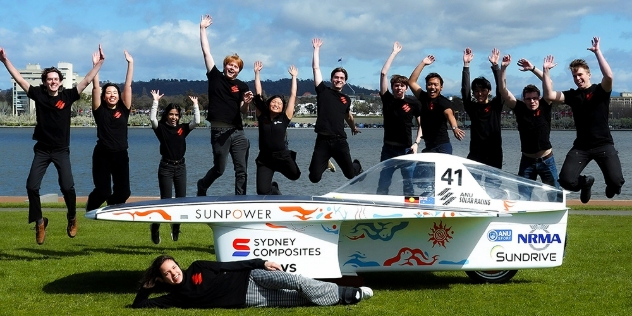Off-grid EV charger showcased at solar race across Australia

As the sun blazes over the Australian outback, an electrifying race is taking place on the Stuart Highway: the 2023 Bridgestone World Solar Challenge.
Now into its 17th event since commencing in 1987, the challenge gives cutting-edge technology that is, solar-powered cars - a platform to prove it is possible to cross Australia in vehicles powered by the sun.
In the time-based race, solar-powered vehicles traverse a gruelling 3,000 kilometres from Darwin to Adelaide powered by the sun. There are three classes: foremost is the Projecta Challenger Class in which only the most efficient and reliable vehicles reach the finish line.
Additionally, there is the CSIRO Cruiser Class in which practical solar-powered cars with at least two seats become part of a CSIRO study to measure the impact of EVs on the grid, and the non-competitive Adventure Class allows past vehicles to enter the race again.
The race has proven an effective jumping board for entrants: students of engineering and physics have gone on to join industry leaders such as Tesla and SpaceX.
Amongst the teams in this year’s race is the ANU Solar Racing Team which has been sponsored by the NRMA. Leading the race in the speed and efficiency-focussed Challenger Class as of Tuesday afternoon are the Innoptus Solar Team, the Solar Team Twente and the Brunei Solar Team – all of which have already reached Coober Pedy.

NRMA's off-grid EV charger
This year the World Solar Challenge has a new technology on the ground for testing: an off-grid charging prototype being developed by the NRMA and Linked Group Services.
Located at the Erldunda control stop about 200km south of Alice Springs, this Australian-first technology aims to solve a problem that is not unique to Australia, but which Australia (and more particularly, the NRMA) can help to solve - remote EV charging.
The prototype built by NRMA and Linked includes two 75 kW chargers powered by a hybrid system of solar panels, battery banks, and a backup generator.
This backup diesel-powered generator automatically switches on when the solar panels aren’t producing enough power and battery levels are low, typically after several overcast days.
Importantly, the availability of a backup diesel-powered generator ensures that the EV chargers are available for use at any time, even in the Australian outback where there are no grid connections (and where it is sometimes overcast!)
During the trial, the backup generator may be used when vehicles are not charging as NRMA determines usage cases. NRMA is also considering the use of biodiesel at the site if distribution can be viably pinned down.
Interesting to note are the results of a test by members of the Tesla Owner’s Club of Western Australia in 2018 using a diesel-powered EV charger developed by engineer Jon Edwards.
The test showed that less fuel is used to power EVs than would be used in a comparable internal combustion engine vehicle, proving that off-grid EV charging can still be more environmentally friendly than driving non-electric cars, even when diesel is the only option for power.
This backup generator automatically switches on when the solar panels aren’t producing enough power and battery levels are low, typically after several overcast days.
— Bridie Schmidt
What comes next
The prototype will inform a solution for remote sections of NRMA’s National Highway electric vehicle charging program being delivered in partnership with the Australian Government.
The NRMA national network is part of a plan to connect the country by delivering EV charging solutions to drivers in a broad range of different locations and situations.
It includes at least 117 new DC charging sites linking up population centres all around the Australia and includes several sites down the red centre from Darwin to Adelaide.
Once trialled and tested, NRMA plans to make this off-grid solution a permanent fixture along remote routes like the Stuart and Eyre Highways.
They will then be added to the My NRMA app’s EV charging feature where drivers can either charge as guests or sign up to access a discount and numerous other benefits.
You can track the 2023 Bridgestone World Solar Challenge here.


